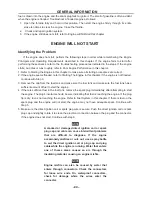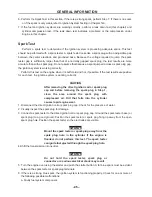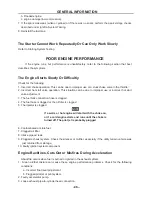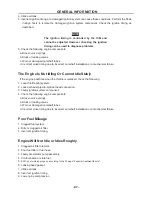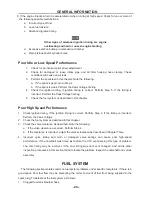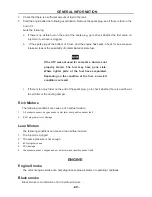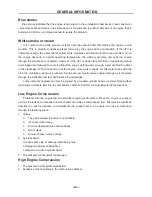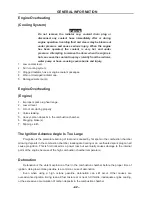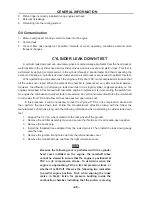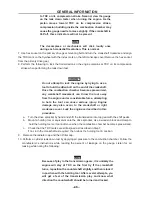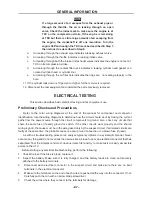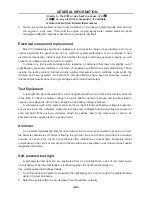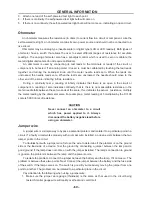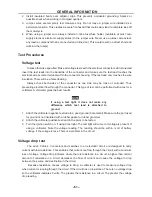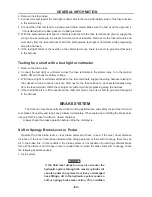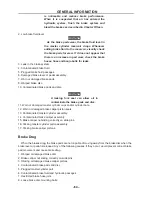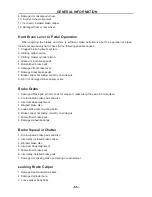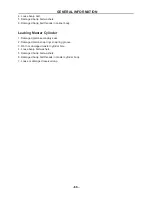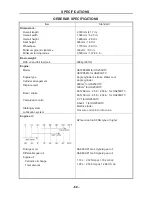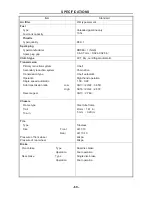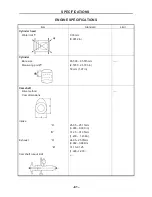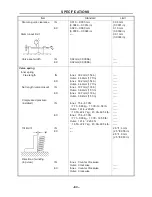
-48-
GENERAL INFORMATION
- 48 -
6. Make sure all terminals within the connector are clean and free of corrosion. Clean them. If
necessary. And pack the connectors with dielectric grease
7. Push the connectors with dielectric grease. The connectors are fully engaged and locked
together
8. Never pull the electrical wires when disconnecting an electrical connector-pull only on the
connector
Intermittent Problems
Intermittent problems are problems that do not occur all the time and can be difficult to locate. For
example. When a problem only occurs when the UTV is ridden over rough roads (vibration) or in wet
conditions (water penetration). It is intermit-ten. To locate and repair intermittent problems. Simulate
the condition when testing the compo-nets. Note the following:
1. Vibration---This is a common problem with loose or damaged electrical connectors
a. Perform a continuity test as described in the appropriate service procedure. Or under
Continuity Test
in this section
b. Lightly pull or wiggle the connectors while repeating the test. Do the same when checking the
wiring harness and individual components. especially where the wires enter a housing or
connector
c. A change in meter readings indicates a poor connection. Fine and repair the problem or
replace the part. Check for wires with cracked or broken insulation
NOTE
An analog ohmmeter is useful when making
this type of test. Slight needle movements are
apparent when indicating a loose connection
2. Heat – This is another common problem with connectors or plugs that have loose or poor
connections. As these connections heat up. The connection or joint expands and separates.
Causing an open circuit. Other heat related problem occur when a component creates its own
heat as it starts to fail or go bad
a. Troubleshoot the problem to help isolate the problem or area
b. To check a connector. Perform a continuity test as described in the appropriate service
procedure. Or under
Continuity test
in this chapter. Then repeat the test while heating the
ground. If the lamp comes on. The problem is the connection between the lamp and
Connector with a heat gun or hair dryer. If the meter reading was normal (continuity) when the
connector was cold, then fluctuated or read infinity when heat was applied, the connection is
bad.
c. To check a component, wait until the engine is clod, then start and run the engine. Note operational
differences when the engine is cold and hot.
d. If the engine does not start, isolate and remove the component. First test it at room temperature,
and then after heating it with a hair dryer. A change in meter readings indicates a temperature
problem.
CAUTION
A heat gun or hair dryer will quickly raise the heat
of the component being tested. Do not apply heat
Summary of Contents for HS200UTV
Page 3: ......
Page 15: ......
Page 94: ... 79 SPECIFICATIONS 79 HYDROGRAPHIC CHART Hydrographic chart Pressure ...
Page 95: ... 80 SPECIFICATIONS 80 LUBRICATION OIL WAY LUBRICATION OIL WAY Pressure splashing oil ...
Page 248: ... 233 CHASSIS 233 Fuel tank cap Remove the fuel tank cap by turning it counterclockwise ...
Page 263: ... 248 ...
Page 304: ... 289 ...
Page 305: ... 290 ...
Page 306: ... 291 ...
Page 307: ... 292 ...
Page 308: ... 293 ...
Page 309: ... 294 ...
Page 310: ... 295 ...
Page 311: ... 296 ...

